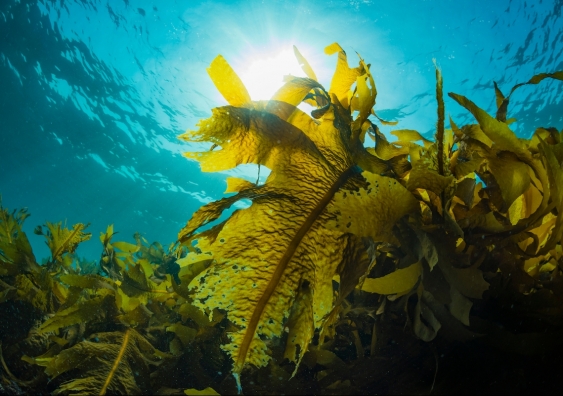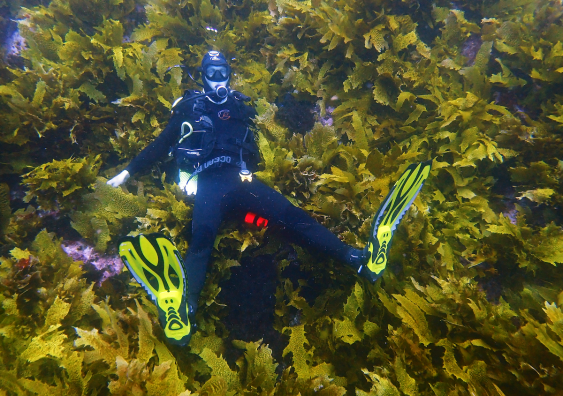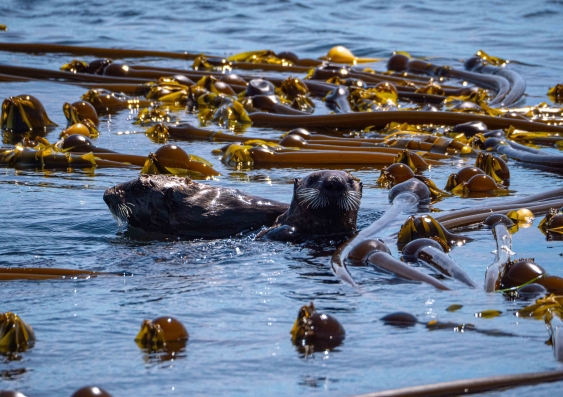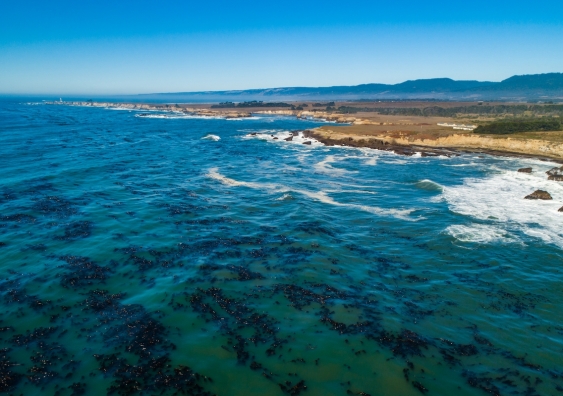Kelp forests: a multi-billion-dollar ecosystem in our waters
New research suggests these underwater canopies provide hundreds of billions of dollars in value to society.
New research suggests these underwater canopies provide hundreds of billions of dollars in value to society.

Ben Knight
╣·▓·¥½ãÀ Media & Content
(02) 9065 4915
b.knight@unsw.edu.au
Living in shallow ocean waters off a third of the worldÔÇÖs coastlines are vibrant jungles of brown seaweed called kelp forests. These underwater canopies support a wealth of biodiversity and, according to new estimates, could be worth quite a bit themselves.
A new study led by ╣·▓·¥½ãÀ Sydney suggests kelp forests are worth hundreds of billions to society through fisheries, nutrient cycling, and carbon removal. While the exact amount varied between regions and kelp type, the findings, published in┬á, suggest they collectively provide an average of $US500 billion through ecosystem services ÔÇô the benefits provided by ecosystems to humans ÔÇô each year.
Dr Aaron Eger is the lead author of the study from ╣·▓·¥½ãÀ Science. The marine ecologist is the founder and director of the ÔÇô a research-driven not-for-profit dedicated to accelerating the protection and restoration of kelp forests worldwide.
ÔÇ£We have a deep cultural connection to this ecosystem. But our understanding of the economic value has been lagging behind other ecosystems competing for conservation funding,ÔÇØ Dr Eger says.
ÔÇ£Now, with this study, for the first time, we have the figures to demonstrate the considerable commercial value of our global kelp forests and the financial impetus for advancing kelp conservation and restoration efforts.ÔÇØ

Lead author of the study, Dr Aaron Eger. Photo: Danielle Holmes.
Read more: 
Despite their commercial value, kelp forests are disappearing worldwide at an alarming rate from sea urchin overgrazing and climate change-related threats. In some places, such as Tasmania, up to 95 per cent of the canopy has already disappeared. Vital restoration projects and management strategies may go unfunded without work to understand the return on investment.
ÔÇ£Multiple drivers increasingly threaten kelp forests, so we must understand their economic contribution if we hope to accelerate efforts to save them and the more than 1800 species that rely on them,ÔÇØ┬áDr Eger says.
ÔÇ£These findings are also highly relevant as we have just launched the Kelp Forest Challenge, a global call to .
ÔÇ£By strengthening our understanding of their value, we can hopefully motivate governments, businesses, and society to reach these target values.ÔÇØ

Kelp forests support a wealth of biodiversity but are disappearing at an alarming rate. Photo: Unsplash.
For the study, the researchers analysed the contribution of kelp forests to ecosystem services using fish and invertebrate surveys and measures of annual net primary production ÔÇô or growth. This growth requires elements such as carbon, nitrogen, and phosphorus to be pulled out of the seawater, effectively cleaning the water and contributing to carbon sequestration ÔÇô┬áthe storage of captured carbon in environmental reservoirs.┬á
They found the most significant economic value of kelp forests in fisheries production and uptake of nitrogen, contributing an average of $29,000 and $73,000 per hectare, respectively, annually. While the estimation for carbon sequestration was low ($163┬áper hectare annually) ecologically, it was comparable to seagrass meadows and terrestrial forests. Collectively,┬áthey could┬áremove 4.91 megatons┬áof carbon from the atmosphere per year ÔÇô┬áa number likely to increase further as more kelp forests are mapped.
ÔÇ£This is just a baseline study, so we expect the approximations will get more accurate as the field advances,ÔÇØ Dr Eger says. ÔÇ£There were also many other services we didnÔÇÖt assess, including tourism, educational and learning experiences,┬áand kelp as a source of food, so we anticipate the actual value of kelp forests in the world to be higher.ÔÇØ

Around 740 million people live within 50 km of a kelp forest. Photo: Ralph Pace.
Read more: 
The findings could open new opportunities for marine management and conservation strategies, such as a credit system for offsetting emissions. Furthermore, Dr Eger says it can also encourage governments to develop new industries around restoring and managing kelp forests.
ÔÇ£Through the study, we found 740 million people live within 50 km of a kelp forest. So these systems have a significant role to play in supporting these peopleÔÇÖs livelihoods and vice-versa,ÔÇØ Dr Eger says. ÔÇ£The more the public appreciates these high-value ecosystems living in their blue backyards, the easier it becomes for policymakers to support their protection.ÔÇØ
While the research is not intended to commodify kelp forests, Dr Eger says it ultimately helps draw attention to the need for more investment in kelp forest conservation.
ÔÇ£Putting the dollar value on these systems is an exercise to help us understand one measure of their immense value,ÔÇØ Dr Eger says. ÔÇ£ItÔÇÖs important to remember these forests also have an intrinsic, historical, cultural and social value in their own right.ÔÇØ
ÔÇ£Hopefully, it helps start more conversation about the role of these ecosystems in maintaining healthy oceans and ultimately healthy coastal communities and cultures.ÔÇØ